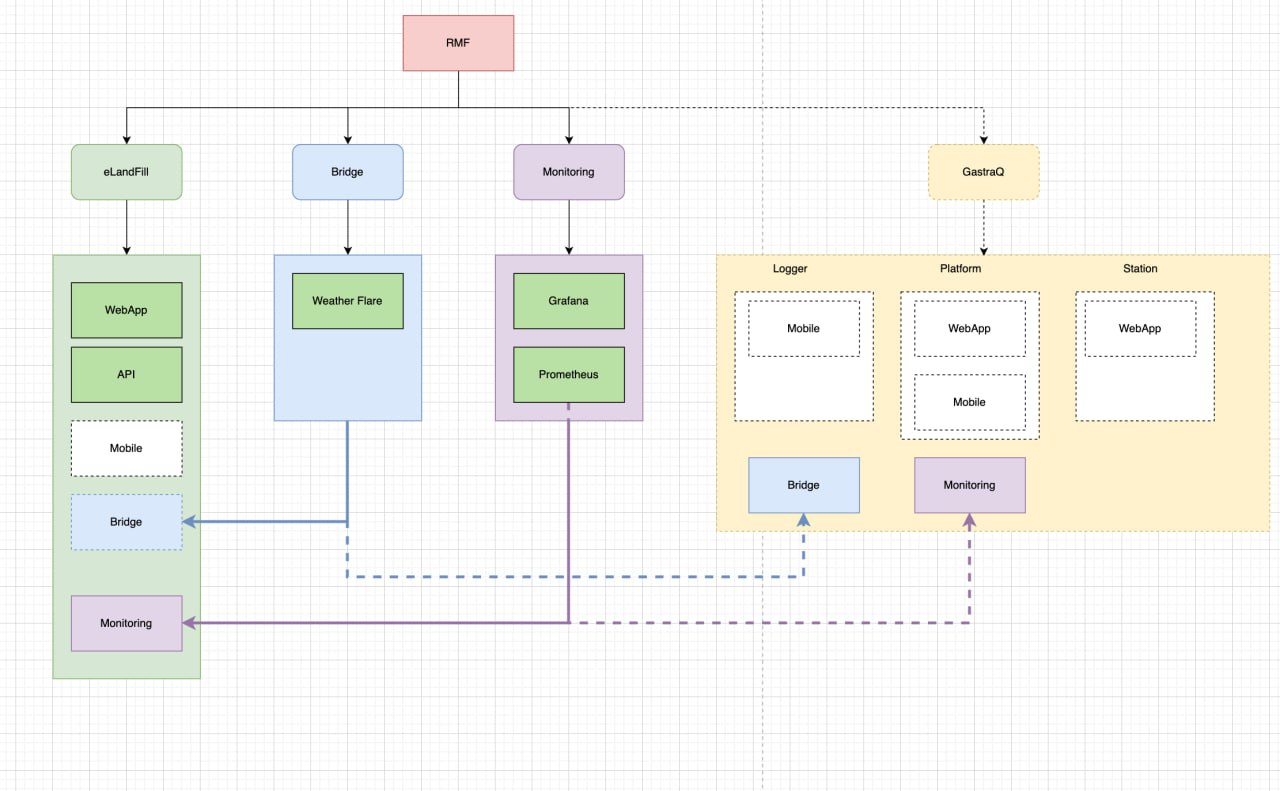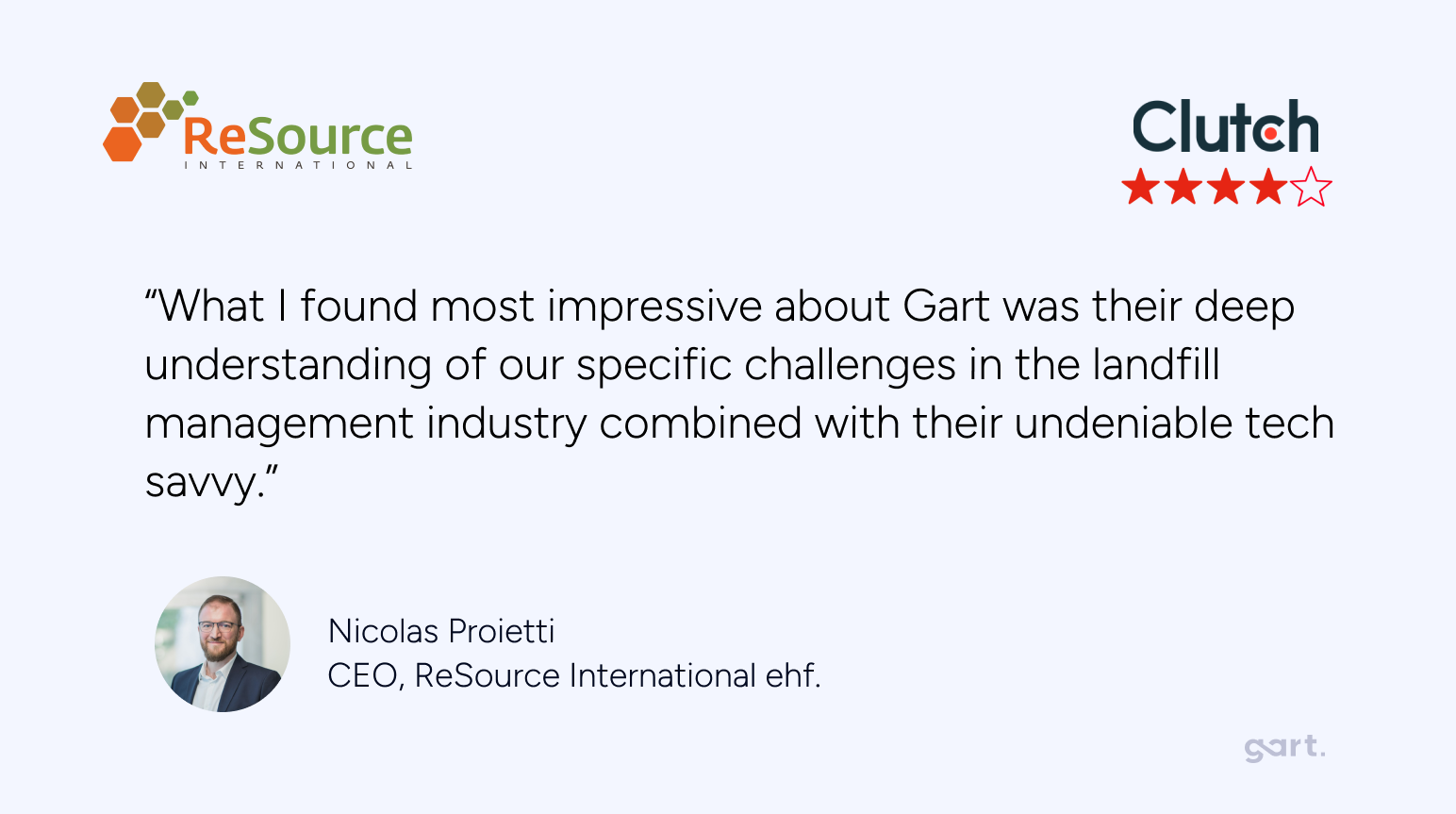This case study examines how Gart Solutions helped ReSource International, an Icelandic environmental solutions company, transform its local landfill monitoring and management product, elandfill.io, into a global, scalable platform. This transformation was achieved by implementing a Platform Engineering approach and developing a Resource Management Framework (RMF).
The Problem: The Need for Scalability and Flexibility
Initially, elandfill.io was a successful landfill management solution in Iceland. However, when new clients from other countries emerged & the company faced a number of challenges:
- Scalability: The existing architecture wasn’t designed to support multiple clients (multi-tenancy) with different requirements and data volumes.
- Flexibility: Adding new functionality or integrating third-party services, such as air quality monitoring, required significant effort and time.
- Management: Centralized management of clients, payments, and updates was complicated.
The client needed a solution that would allow them to easily “multiply” the infrastructure and configurations for new clients with flexibility, while ensuring stability and reliability.
The Solution: Building a Platform with Platform Engineering
Gart Solutions proposed an approach based on Platform Engineering — creating an Internal Developer Platform (IDP) that would abstract the complexities of infrastructure and provide developers with self-service tools.
This platform, named the Resource Management Framework (RMF), became the foundation for the product’s future development.
Key Principles of the RMF:
Architectural Layers: the platform was divided into three main layers:
- Application Layer: Contains the front-end, back-end, and Bridge Services for interacting with other components.
- Platform Layer: The central layer that provides key services like databases, geo-applications, and other service applications. This “constructor” allows for the flexible addition of new business capabilities.
- Monitoring Layer: Ensures monitoring, log collection, and metrics for the entire platform, guaranteeing its stability and performance.

Microservices Architecture:
The back-end was developed based on microservices, which allowed for independent development, deployment, and scaling of individual system components.
The inclusion of GastreQ and Station components demonstrates the platform’s modularity and ability to integrate new, specialized functionalities — a key requirement for the client.
Automation
The RMF automates the entire cycle, from infrastructure creation to configuration, significantly reducing the time required to deploy new client environments.




